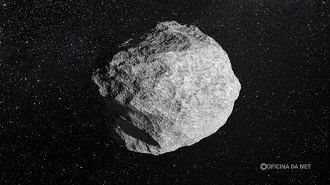Astronomers have been observing the Asteroid YR4 since December 2024, a space object that measures between 40 to 100 meters in length and could potentially approach Earth on December 22, 2032. While the chances of impact are currently low, there are discussions among scientists about the option of using a nuclear bomb to alter its trajectory. However, it is important to note that there is no need for panic at this stage.
You need to know a summary of what to do.
- Asteroid 2024 YR4 has a 2.2% probability of hitting Earth in 2032.
- Scientists are assessing the possibility of using a nuclear explosion in space to change the path of an object.
- Simulations suggest that this method may prevent collisions but could also produce smaller and hazardous debris.
Is it a genuine issue or just a fuss?
The likelihood of impact has been changing recently, which is typical when a new asteroid is added to NASA and ESA’s risk list. Increased observations often lead to lower chances of impact, but the recent rise in odds has raised concerns.

Scientists are expected to confirm by April 2025 that there will be no impact, according to Davide Farnocchia, NASA’s navigation engineer.
The likelihood of a collision has increased significantly, but there is no guarantee that this trend will persist.
Do nuclear detonations function effectively?
Some scientists are already exploring planetary defense strategies, with one study proposing that using radiation pulses from a nuclear explosion in space could be an effective measure to prevent an impact, despite Farnocchia’s optimism.
Scientists conducted experiments using radiation machines to mimic asteroid interactions. The outcome involved vaporizing the object and changing its trajectory, similar to a “pushing back” rocket, as suggested by Harrison Agrusa from the Côte d’Azur Observatory. This method may be the sole option for dealing with asteroids detected at short notice.
The proposal involves using an unmanned spacecraft to detonate a nuclear device close to the asteroid in order to break it apart using X-rays, gamma rays, and neutrons. However, there is a significant danger that the explosion could turn a large asteroid into multiple smaller fragments that could still pose a threat to Earth.
What is happening?
Scientists will keep observing the 2024 YR4 until April to establish its precise trajectory, with the possibility of resorting to a nuclear space detonation if a planetary defense strategy is deemed necessary.
Nathan Moore, the primary researcher of the study, emphasizes the rarity of significant asteroid impacts on Earth and the importance of being able to plan and protect against them.
Large asteroids rarely hit the Earth, and we have methods to get ready for such natural disasters, which is reassuring.
If the asteroid returns to Earth’s path in 2028, the debate on placing nuclear bombs in space will intensify further.
Information sourced from Folha and The Network.